Painting, decorating and home improvement tips blog
Review of Purdy products
Posted by Adrian
August 3rd, 2015
Review of Purdy products
I was recently contacted by a PR company representing Purdy Professional Painting Tools, they asked if I would like to try some of Purdy’s products and give a review. I thought this would be a good opportunity for both myself and Purdy. For me, I get to try some of Purdy’s world famous products and for Purdy, they have a professional decorator giving an honest real life review. All of the products I reviewed were tried and tested on real life jobs.
Here is my review on the products tested.
Purdy Sprig Elite Paint Brush 2 Inch
I have used this brush for Masonry paint, emulsion and primer/undercoat, all water based products. I found this brush to be a good size and the bristles are just the right stiffness. I haven’t tried this brush on a oil based paint but think it would give a good finish and ideal for laying off.
I also like the fact that all Purdy’s brushes are hand finished and have the person’s signature on a label on each brush.
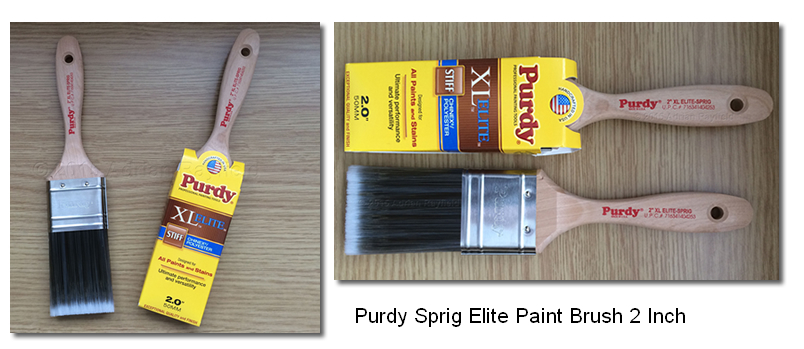
Purdy Marathon Roller Sleeve
I used this roller sleeve on a recent exterior job. The sleeve performed well and held a large amount of paint which was really good when doing a gable end wall, which meant less times up and down the ladder.
I also used the sleeve on a ceiling and was again pleased with the result it gave me, it left a good even finish.
The only thing I noticed was it seemed slightly longer to wash this roller out than other sleeves I had used, but maybe I hadn’t scrapped enough paint out before washing?
The marathon can be used for both water and oil based paints.
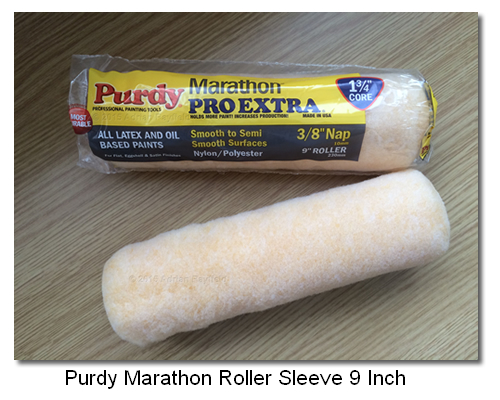
Purdy 9″ Revolution Frame
This cageless frame is great to use, it is lightweight and it rolls very smoothly. The roller sleeve has a good snug fit to the frame so doesn’t move whilst in use. This frame had a slightly longer handle / arm than I normally use which was good I was able to emulsion a standard height ceiling with ease without a ladder.
This frame also features a quick connect feature for connecting with the Purdy Power Lock extension poles, but can also be screwed onto other makes of pole.
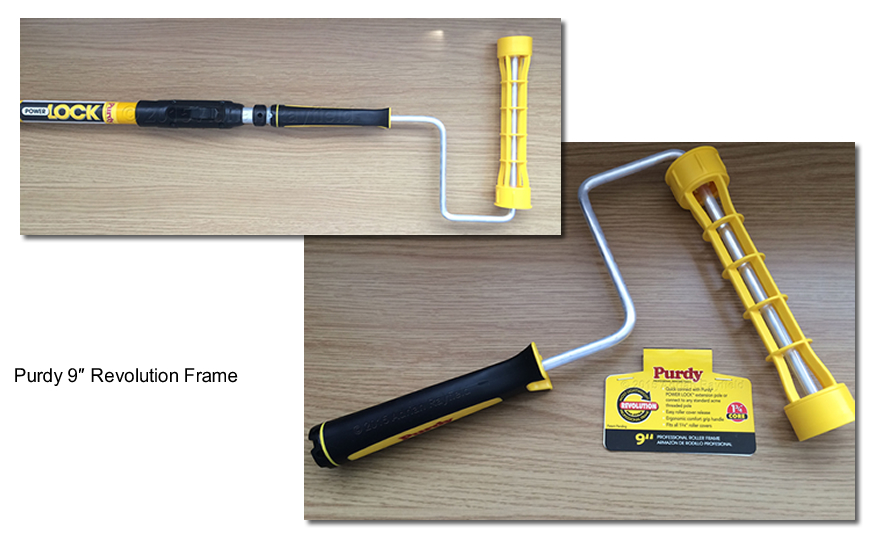
Purdy Power lock extension pole 2′- 4′
This extension pole is well built and sturdy and is an ideal length at 2 – 4 feet just to get to those hard to reach places or a ceiling without using a ladder. It is made from Aluminium and fibreglass with quick adjustment locking system. It also has a quick connect system for there new Revolution frames, but it will also take their old frames and other make of roller frames too.
This extension pole makes is easy to change length with it’s locking system and is ideal to keep in your van to call upon when needed.
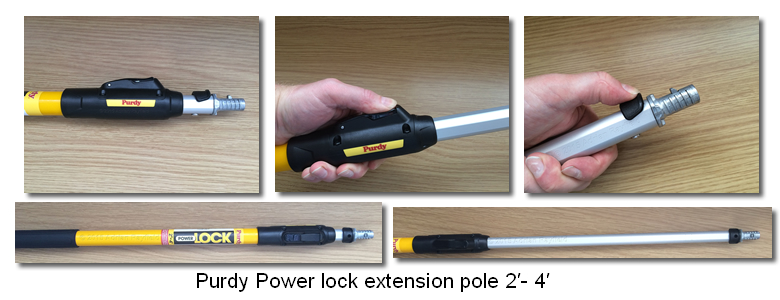
Purdy Jumbo Mini Roller Frame
The jumbo mini roller frame is ideal for getting into tight places, such as behind radiators. Used in conjunction with the Jumbo marathon roller sleeve it hold lots of paint and performs like the bigger 9″ roller.
The frame is cageless and glides well giving a smooth action.
Purdy Jumbo Marathon Roller Sleeve
This sleeve holds lots of paint so you can go a long way with this roller system, ideal for tricky to reach areas. This sleeve can also be used for water and oil based paints.
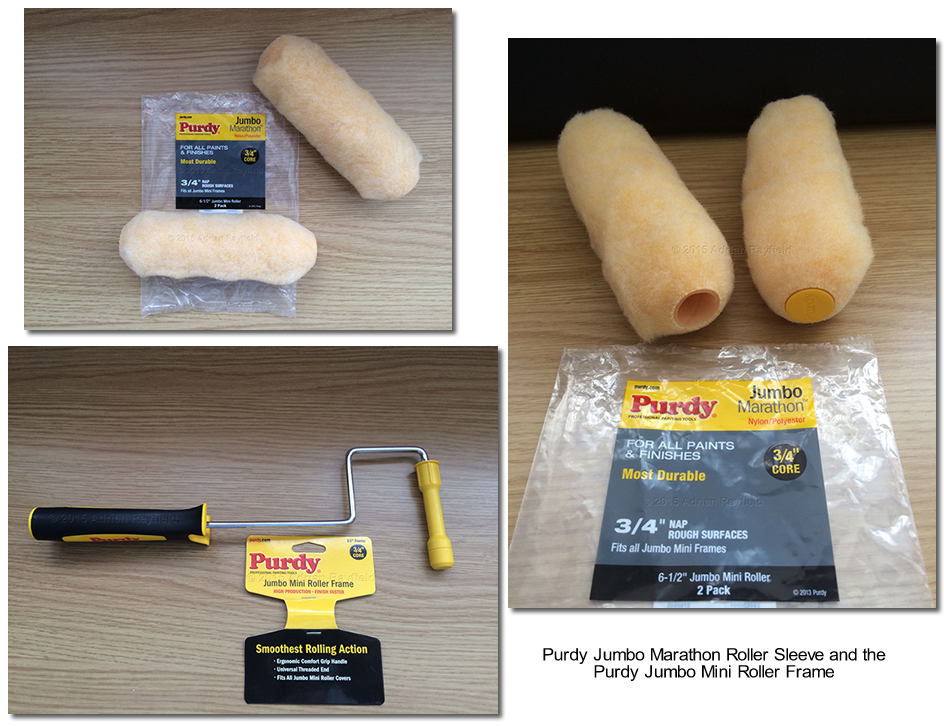
In Conclusion
After trying all the above products I was pleased with how they all preformed, I especially liked the new Revolution Frame as it was light and had a good smooth glide, I will be using it a lot in the future.
As a result of this review I shall be considering incorporating Purdy products into my tool box, so they could well be appearing in my van very soon!
Tags: Cageless frame, Extension Pole, Jumbo Mini Roller, Marathon Roller, Paint Brush, Power Lock, Purdy, Revolution, Roller Sleeve, Sprig Elite
Posted in Decorating Tips, News, Reviews | 6 Comments »
Wallpapering ‘Frames’
Posted by Adrian
June 29th, 2015
Wallpapering ‘Frames’
I have recently just completed a wallpapering job for a client. The room was a spare bedroom / playroom. As this room is to serve as a dual purpose room the client didn’t want the room to be too child like, or to grown up. The client looked online and decided on a wallpaper from Graham and Brown called Frames.
This wallpaper was ideal for the situation it was to be used in, modern and contemporary enough for any adults staying in the room, but also fun for a child. The frames on the paper can be used to stick family photos, postcards, artwork and you can even draw your own artwork directly into a frame to give it a totally unique style. If you do draw directly onto the wallpaper be aware that the paper is only spongeable and anything drawn onto the wallpaper may not come off.
About the wallpaper
The wallpaper is a paste the paper type, as opposed to paste the wall. The soaking time is around 5 minutes. The design / pattern match is free, so no matching up to do. The paper is 52cm wide and the rolls are 10 m long.
I found the paper easy to hang and the final result was very effective as you can see by the following photos.
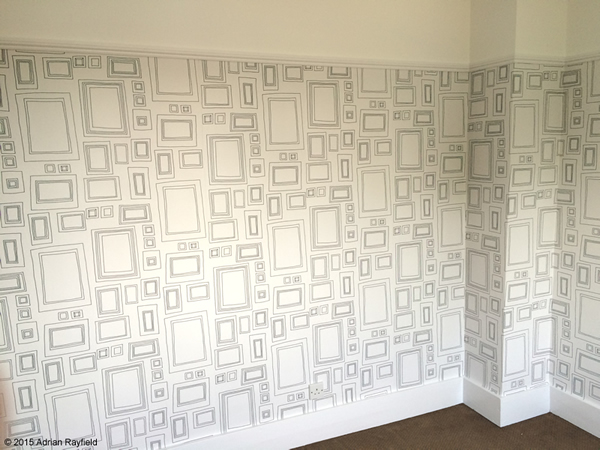
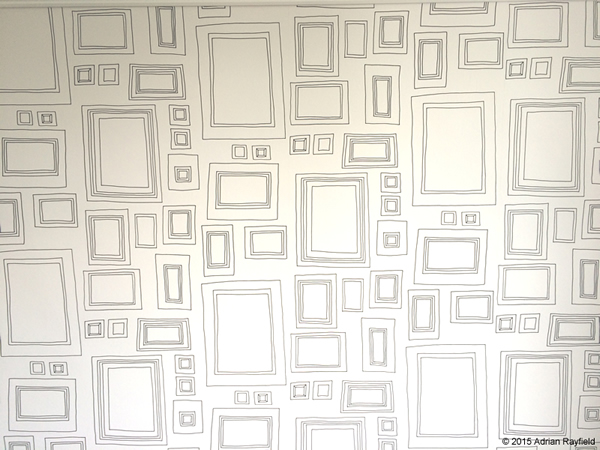
Tags: bedroom, Frames, Playroom, Wallpaper, Wallpapering
Posted in Decorating Tips, News | 3 Comments »
How to paint a front door
Posted by Adrian
May 18th, 2015
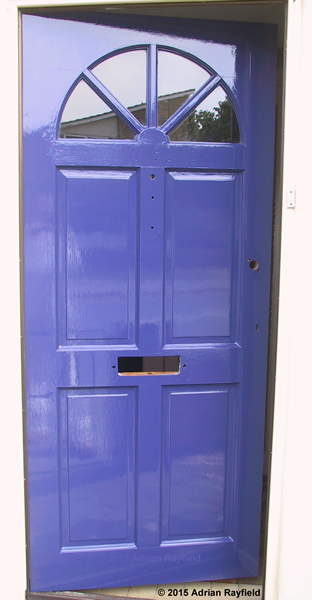
How to paint a front door
From time to time you will need to paint your front door, if it is wood that is. Ideally pick a couple of dry days to complete the job such as spring or summer. Pick a good quality exterior paint to ensure a long lasting job.
The front door is one of the most seen parts of your house, a good looking door gives a good impression to visitors, and especially if you are selling your house as it gives kerb appeal.
You should gather all the tools required before starting, you will need:
- Screwdrivers
- Adjustable spanner
- Sandpaper (various grades)
- Primer
- Undercoat
- Topcoat (Satin or gloss)
- Paint stripper (optional)
- Heat gun (optional)
- Scraper (optional)
Ironwork / Door furniture
The first job is to remove all ironwork or door furniture such as locks, knocker, letterbox, escutcheon, door pull and numbers. This will make it far easier for working on the door. Put everything to one side being careful not to lose any screws as some can be tiny and you will need them again later to refit the ironwork / door furniture. You may need an adjustable spanner for the knocker or letterbox.
Preparation
As with all decorating jobs, preparation is key and will take most of your time. Now is the time to decide if you are simply going to re-decorate your door, or give it a real overhaul and strip the existing finish off back to bare wood.
If you are going to remove all the existing paint finish you can do this either by using a heat gun and scraper, or paint remover and scraper. The choice is really up to you. Once the door is stripped give it a good rub down and fill any crack and holes and sand these level and smooth. Once you have done this you are now ready to move to the next section, prime.
If you decide against stripping the door back to bare wood, or it simply doesn’t need it you should give the existing surface a good clean off to remove dirt and grime with a cloth and maybe water, the give the surface a good rub down. Fill any cracks or unwanted holes and rub them down level and smooth. Dust off and you can move onto the next section, prime.
Prime
Once you have prepared the door you should prime the entire door if you have stripped it back to bare wood, or spot prime bare wood if you have just rubbed down and filled. Allow to dry before moving onto undercoating.
Undercoat
Once you have primed the door, whether it be the entire door or spot primed, give the primer a light sand down before applying one or two coats of undercoat. Allow each coat to dry fully if you give it more than one coat sand back between coats for that perfect smooth finish.
Topcoat
Once you have prepared the door correctly and given it it’s necessary coats of primer and undercoat you can now give the door it’s final sand back and the final coat, the topcoat. This maybe a satin finish or a gloss. Again you may want to give two topcoats, but read the manufacturer’s instructions to ensure you leave enough time between coats, and a word of warning, if you sandback, you a fine paper and use light strokes. If you are too harsh you could scratch the surface too much, or even worse roll up the first coat and ruin all your hard work.
Non-painted or varnished doors
This post deals with painted doors, such a glossed doors but for other finishes, such as varnish or stained door the principle is the same, apart from you wouldn’t use primer or undercoat, however the preparation part is still applicable and needs to be done.
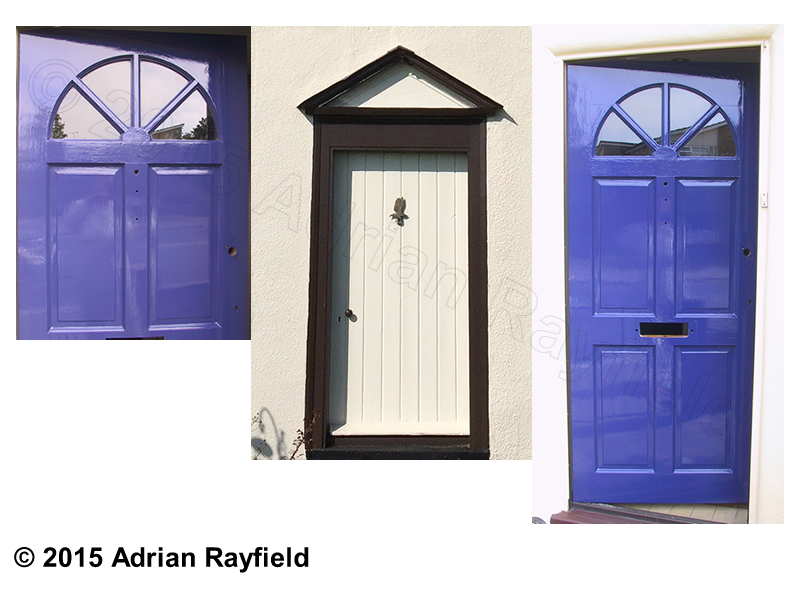
Tags: Door, Door Furniture, Filler, Filling, Gloss, Ironwork, Knocker, Letterbox, Lock, Paint, Painting, Preparation, Primer, Satin, Topcoat, Undercoat, Varnish, Woodstain
Posted in Decorating Tips | 1 Comment »
